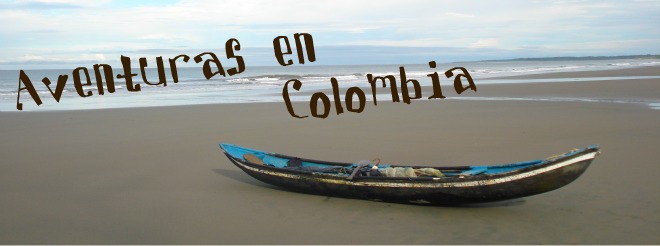Brunettes make fun of blondes. Us northerners have jokes about the southern rednecks and they have their "yankee" ones in return. Minnesotans have the 'Sconies to laugh at. And everyone makes cracks about Canadians. It almost seems to be part of human nature to assign one group of people as the delegated "butt" of jokes. Well, Colombia is no different and here they have the Pastusos to thank for that.
The southwestern most part of Colombia, mainly the department of Nariño, includes the mountainous region bordering Ecuador as well as a small part of the tropical Pacific coast. Due to its proximity to Ecuador and the terrain of this part of the Andes, the region is culturally different than much of the rest of the nation. Winter coats, wraps, and scarves are worn by anyone in the streets. Cuy (guinea pig), a common food staple in Ecuador and Perú, is is sold in many restaurants and street cafés. And the selection of hot drinks is plentiful, as is mora juice - a blackberry relative.

My high school friend, Chris, who I
traveled with to Machu Picchu and Lake Titicaca in Perú over Christmas vacation, is currently on a two month trek through the continent and was conveniently passing into Colombia at about the time my Spring Break/Semana Santa vacation was beginning. I met Chris in the border town of Ipiales, where money changers were commonplace around the main plaza exchanging U.S. dollars (the currency of Ecuador) for Colombian pesos.
 |
| Sanctuario de las Lajas |
There isn't much to do or see in Ipiales save for the majestic and architecturally out of place Sanctuario de las Lajas, a massive church that spans a picturesque mountain gorge. Originally built has an homage to the Virgin Mary after a peasant girl saw her imagine on a rock in the gorge in the mid-1700's, the worship structure has morphed and grown many times in the last 200 years to the point it is at today.
During the guided tour of the church crypt and museum, our guide, while knowledgeable, did not do her fellow countrymen's dim-witted reputation any favors. For several rounds of questioning, she insisted that a black and white photograph depicting a little
campesino girl in her mother's arms, pointing at a picture of Mary and two saints drawn on a rock, was "an actual photograph of the girl" who saw the imagine. Until it was pointed out to her that the camera wasn't invented until at least 50 years later - and I'm pretty sure there wasn't one in rural southern Colombia, nor was it of this kid of photographic quality - she continued insisting on the pictures authenticity. She also disappointed and confused us in her spacial awareness as to what part of the church's lower levels we were in. After going down two and then three flights of stairs, she insisted continuously that we were still in the first level below the church despite that fact that the windows were much different on each level.
So, what do you call a Pastuso tour guide who...oh, you've probably heard this one before. Never mind!
Our next stop in Nariño was the larger city of Pasto. For being isolated, mountainous, and not very large compared to Colombia's other metropolis's, Pasto was quite cosmopolitan in its cultural atmosphere. There were many beautiful churches and plazas to visit as well as an abundance of cozy cafes filled with well-dressed and trendy locals. It was the perfect marriage of small town quaint and big city bustle.
 |
| Laguna de la Cocha |
Just outside of the city of Pasto is Colombia's largest and highest lake, Laguna de la Cocha. After spending time in Perú's Lake Titicaca, Chris and I joked that we should visit all of the highest lakes in South America. We stayed at a Swiss lodge founded and run by a couple from Switzerland. It felt like a ski resort without the snow; there was a lot of wood in the building, hot drinks served all day long in the restaurant, and bags filled with boiling water put under your bed at night. From the top of a nearby hill we got a scenic view of the northern part of the lake as well as the sole island, home to a nature reserve for the trees and birds of the area.
After a relaxing and chilled couple of days in the mountains, we headed to the airport to fly back to the tropical warmth of Cali. I mention the airport because it is located on the top of a flattened peak. Flights literally take off by running out of runway and the airport shuts down when there are clouds. We were fortunate enough to have a sunny day and clear skies for our return trip to the land of salsa dancing and no coats.








